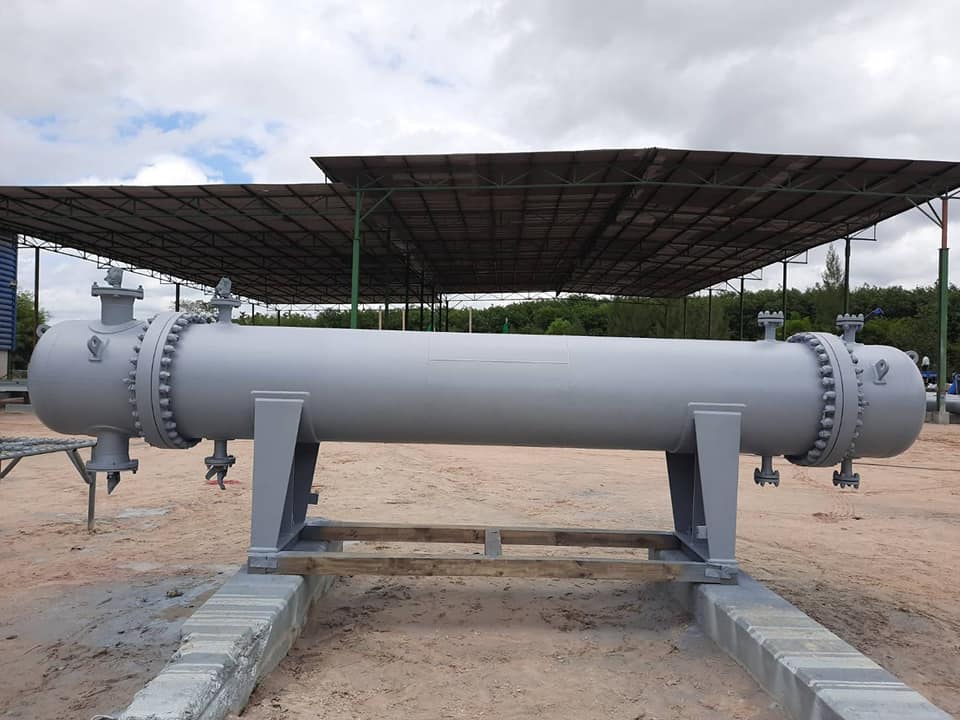The Code of Construction for Shell and Tube Heat Exchangers (STHE) is governed by international and national standards to ensure safety, reliability, and performance. Below are the key codes and standards used in their design, fabrication, and testing:
1. ASME (American Society of Mechanical Engineers) – Most Widely Used
- ASME Boiler and Pressure Vessel Code (BPVC), Section VIII, Division 1 or 2
- Covers design, materials, fabrication, inspection, and testing of pressure vessels (shell side).
- Division 1: Standard construction (lower pressure).
- Division 2: Higher pressure/stress analysis (more rigorous).
- ASME Section II – Material specifications (e.g., SA-516 for carbon steel).
- ASME TEMA (Tubular Exchanger Manufacturers Association) Standards
- Defines mechanical design, tolerances, and nomenclature (e.g., TEMA Class R, C, B).
2. API (American Petroleum Institute) – Oil & Gas Industry
- API 660 – Covers shell-and-tube exchangers for refineries.
- API 661 – Air-cooled exchangers (complementary to API 660).
3. EN (European Standards)
- EN 13445 – European pressure vessel code (alternative to ASME).
- PED (Pressure Equipment Directive) 2014/68/EU – Mandatory for EU market compliance.
4. ISO (International Standards Organization)
- ISO 16812 – Covers design, materials, and testing for shell-and-tube exchangers.
5. Other Regional Codes
- PD 5500 (UK) – British pressure vessel standard.
- JIS B 8243 (Japan) – Japanese pressure vessel code.
- GB/T 151 (China) – Chinese heat exchanger standard.
Key Design & Testing Requirements
A. Materials & Fabrication
- ASME Section II lists approved materials (e.g., SA-240 for SS plates, SB-163 for tubes).
- Welding Standards: ASME Section IX (qualification of welders/procedures).
B. Pressure Testing
- Hydrostatic Test: 1.5 × design pressure (ASME VIII).
- Pneumatic Test: 1.1 × design pressure (for leak testing).
C. Non-Destructive Testing (NDT)
- Radiography (RT): For weld joints (ASME UW-51).
- Ultrasonic Testing (UT): For detecting internal flaws.
- Dye Penetrant (PT) / Magnetic Particle (MT): Surface crack detection.
D. TEMA Classification
- TEMA Class R: Severe refinery/petrochemical service.
- TEMA Class C: General commercial/industrial use.
- TEMA Class B: Chemical process applications.
Compliance & Certification
- ASME U Stamp: For pressure vessels (mandatory in USA/Canada).
- CE Marking: Required for EU (per PED).
- NB (National Board) Registration: Post-construction certification.
Summary Table: Key Codes for STHE
| Component | Applicable Code |
| Shell & Heads | ASME BPVC Sec VIII, EN 13445 |
| Tubes | ASTM A179/A249 (SS), B111 (Cu) |
| Tube Sheets | ASME Sec VIII + TEMA |
| Gaskets & Bolting | ASME B16.20/B16.5 |
| Pressure Testing | ASME Sec VIII, UG-99/100 |
When to Use Which Code?
- Oil & Gas (USA/Canada): ASME BPVC + API 660 + TEMA.
- Europe: EN 13445 + PED.
Global Projects: ISO 16812 + ASME/EN.
